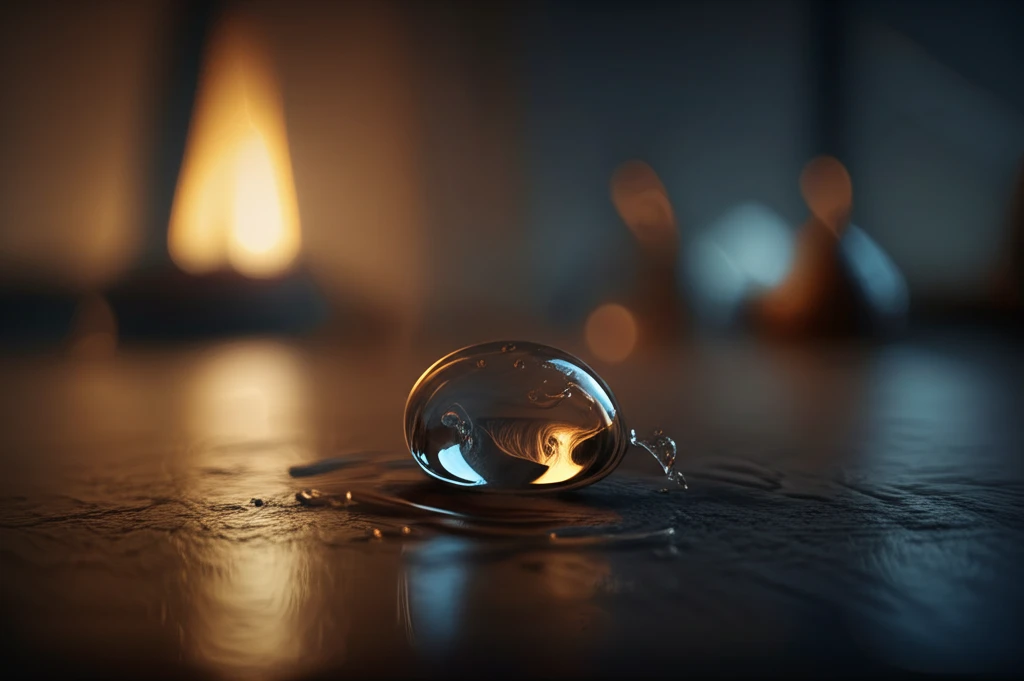
Droplet Dynamics: How Radiative Heating Can Make Water Move on Hydrophobic Surfaces
"Discover how thermal radiation influences water droplet movement on water-repellent surfaces, uncovering innovative cleaning and heat transfer methods."
In a world increasingly focused on efficiency and cleanliness, the behavior of water droplets on surfaces holds significant importance. Whether it's developing self-cleaning materials or improving heat transfer in industrial processes, understanding how to control and manipulate these tiny volumes of water is key. A fascinating area of research explores how thermal radiation affects the movement of water droplets on hydrophobic, or water-repellent, surfaces.
Imagine a surface so repellent to water that droplets form perfect spheres, easily rolling off with the slightest tilt. Now, introduce a heat source. The dynamics change dramatically as the heat alters the droplet's internal forces, influencing its movement and behavior. This interplay between surface properties, water behavior, and thermal energy is the subject of cutting-edge research with implications across various fields.
This article delves into the groundbreaking work of Abdullah Al-Sharafi, Bekir S. Yilbas, and Haider Ali, who investigated the impact of thermal radiative heating on water droplet mobility on hydrophobic surfaces. Their findings offer valuable insights into optimizing surface cleaning techniques and improving thermal management in technological applications. Let's explore how their research could pave the way for more efficient and sustainable technologies.
Understanding Hydrophobic Surfaces and Radiative Heating

Before diving into the specifics of the study, it's important to understand the key concepts at play. Hydrophobic surfaces are materials designed to repel water, characterized by high contact angles between the surface and water droplets. This is often achieved by texturing the surface at a microscopic level or coating it with a water-repellent material. Common examples include non-stick cookware, water-resistant clothing, and self-cleaning windows.
- Hydrophobic Surfaces: Materials designed to repel water.
- Radiative Heating: Transfer of heat through electromagnetic radiation.
- Contact Angle: The angle formed where a liquid interfaces with a solid.
The Future of Droplet Research
The work of Al-Sharafi, Yilbas, and Ali provides a crucial stepping stone toward optimizing droplet-based technologies. By understanding the interplay between radiative heating and surface properties, we can design more efficient cleaning systems, advanced cooling solutions, and innovative materials. As our world increasingly demands sustainable and efficient technologies, the subtle yet powerful dynamics of droplet behavior will undoubtedly play a central role.
